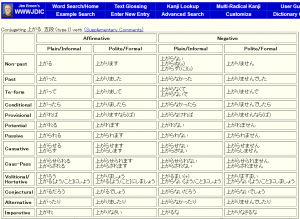Tuttle Publishing sent me four books to review so without further ado, here we go. The first one on the list is Japanese Kanji and Kana by Wolfgang Hadamitzky & Mark Spahn.
According to the preface, this book is useful as “both a textbook and a reference work” and it “serves beginners as well as those who want to look up individual kanji”. So let’s take a look at what purpose this book serves.
Introductory Chapters
The first 68 pages have some interesting information about the Japanese writing system. It describes various aspects of Kana, Kanji, and punctuation. I found this to be the most helpful and informative part of the book. In particular, the 17 structures of Kanji and the rules for writing Kanji were particularly helpful.
It also has all the information you need to teach yourself Hiragana and Katakana. However, I wouldn’t recommend using this book to learn Kana because it has no audio resources to hear the pronunciations. In addition, there are so many better tools online to learn Kana for free, that you don’t really need to get a book anymore to learn it.
You can actually check out most of this information yourself by looking inside the book on Amazon although there currently appears to be an issue with all the Japanese showing up as dots.
Jouyou Kanji List
The bulk of this book from pages 71-376 contain the list of Jouyou Kanji. Each character has the stroke order, radicals, readings, meanings, example words, you know, the usual stuff. This edition has the complete list that was recently revised and even kept some of the really useless ones that were removed such as “pig iron” (銑). (Why???) This brings me to my major complaint. What is the point of this book?
Is this a textbook or dictionary?
If this is a textbook, how am I supposed to use this to learn kana and kanji? There are no pronunciation for Kana, no practice sheets to write with, and no reading material to learn Kanji in context. There are a few tips on exactly two pages such as “Learn the kanji in order”, “Learn compounds with known kanji”, and “Review, and train yourself to read quickly”. However, I don’t see how the contents of this book really help accomplish those goals. And really, learn the kanji in order? Are you kidding me? Might as well start telling people to start learning by memorizing the dictionary. I don’t see how this books helps with learning kanji except as an incomplete and functionally obsolete kanji dictionary. Which brings me to my next point.
The end of this book has 3 indexes to look up Kanji with: radicals, stroke order, and reading (in romaji, ugh). This is how we used to learn Kanji back in the old days when I had to go to school uphill both ways. If you ran into a word you didn’t know, you needed to take EACH character in the word and look it up in a Kanji dictionary by going through a long list of Kanji with the same stroke order or guess which radical was picked to be THE radical. Then try different combinations of multiple on and kun readings in a regular dictionary and hope you got lucky. Basically, for words like 仲人, you didn’t stand a chance in hell of figuring out how to read the word or what it meant.
In today’s world where you can get FREE kanji dictionaries that can do combined multiple radical lookups, stroke order ranges, and even handwriting recognition on any number of devices such as your phone, computer, tablet, and even a Nintendo DS, there is really NO point in having a paper Kanji dictionary. This is especially true for one as inferior as this one with only 2,141 characters. I’ve already written about the trap of “Learner dictionaries” and how the Jouyou Kanji list completely undermines the importance of Kanji outside the list. This dictionary falls into both categories and is likely to fail you pretty early in your studies as soon as you run into a non-Jouyou Kanji and you frantically try to find the missing character and then realizing you need to buy ANOTHER REAL dictionary or silly you, there’s a bunch of free tools online that’s way better and you just wasted your money.
Conclusion
In reviewing any book, I ask myself the following two questions.
1) What purpose does it serve?
2) Can something else do it better and/or cheaper?
This book can be used to teach yourself Kana and act as a Kanji dictionary. However, both of these tasks can be done with superior tools that are free such as jisho.org and kana courses on memrise.com. I assume you have some device that can browse the internet because you’re reading this. If so, chances are, there are better tools out there for your device than what’s offered in this book. The first 68 pages have some useful information but you can also find it elsewhere online for free such as Wikipedia or even my website.
If you want to enjoy the pains of learning Japanese back in the day when we had nothing better, then go for it. Otherwise, I would suggest saving your money. Unless you’re going to a place with no internet and electricity and feel like learning some Japanese. I suppose that’s always a possibility…




